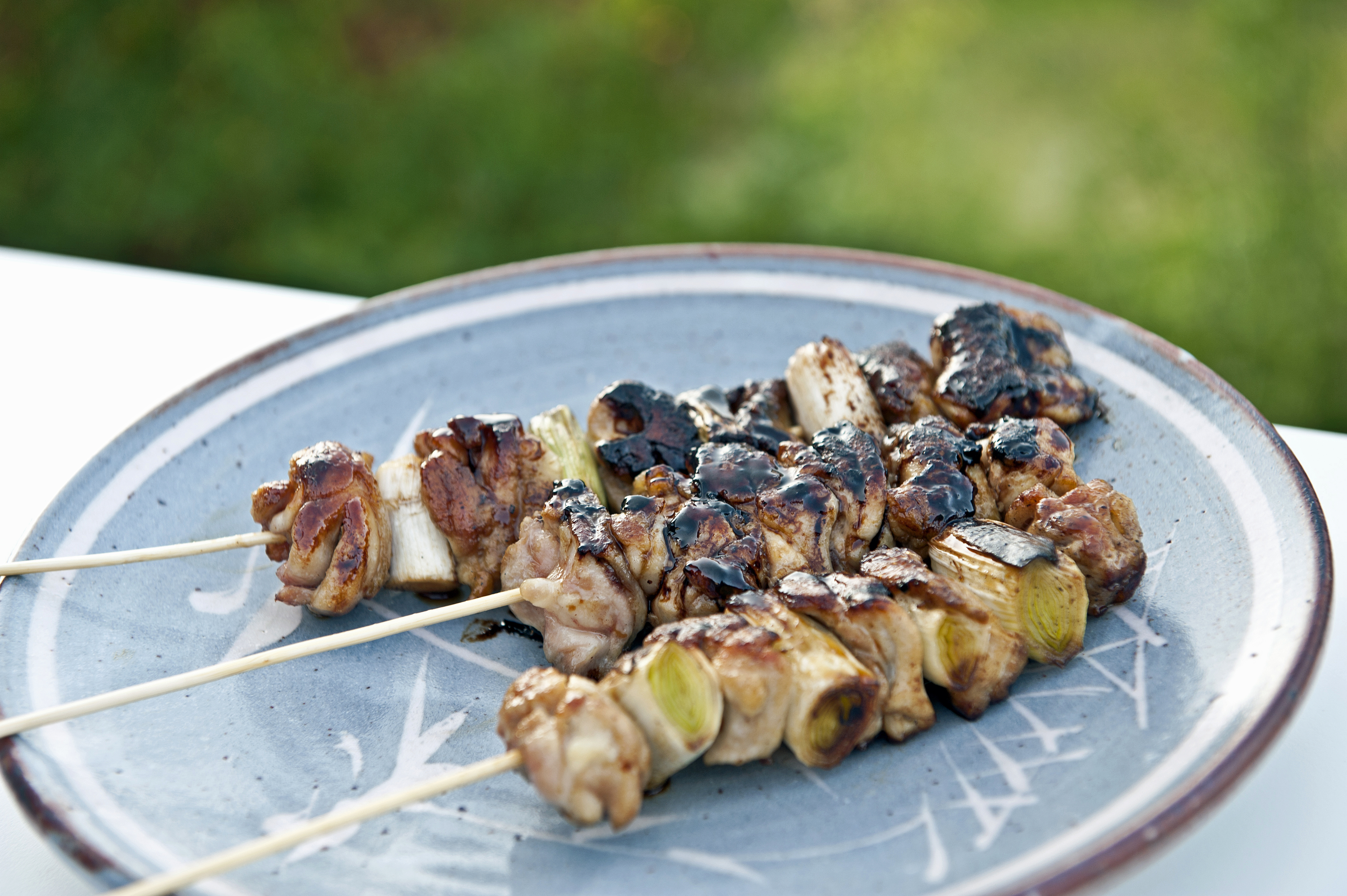The grilled chicken skewers known as yakitori are good at any time of the year, but they go especially well with ice-cold beer. They also have an excellent chance of becoming the next big Japanese culinary hit worldwide — after sushi and ramen.
Like a lot of so-called traditional Japanese dishes, the history of yakitori does not stretch back very far. This was partly due to various restrictions and edicts against the consumption of meat, especially during the Edo Period (1603-1868), which were implemented mainly for religious reasons based on Buddhist beliefs. Even though chicken was not entirely banned — unlike beef and pork — the smell of grilling meat was considered distasteful. In addition, the most commonly available chicken meat was from shamo, well-muscled roosters that had been used in cockfights. The most common way to eat this type of chicken in the 18th and 19th centuries was to stew it until tender in nabe (hotpots). Heizo Hasegawa, the real-life head of a special police unit in Edo (present-day Tokyo) — who's also the hero of a popular book series by Shotaro Ikenami as well as several TV series — is often depicted enjoying shamo-nabe at Gotetsu, his favorite eatery in the city.
Hasegawa wasn't able to eat it at home as cooking meat was considered to be in poor taste for someone of the samurai class.


















With your current subscription plan you can comment on stories. However, before writing your first comment, please create a display name in the Profile section of your subscriber account page.